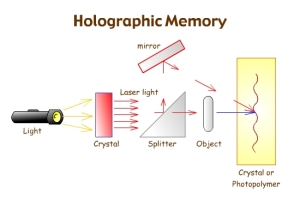Just think how different the theory of evolution might be if Charles Darwin had used a computer. It’s not that he needed to crunch a lot of numbers to check out his theory, it is just that he was operating without the benefit of many basic concepts that the computer represents. For one, he had no concept of a code driven system. He had no idea that his theory of evolution depended on such a system to function. Nor did he have any concept of DNA, the heart of that system. If he had understood just those two concepts out of the many that have come to light since, his book Origin of the Species probably would have been very different.
If he, or any of those individuals who helped define the theory in it’s first one hundred years, had understood that biophotons are emitted by DNA in living cells, if they had been aware of Cleve Backster’s experiments with living cells and their ability to communicate over great distances, or modern quantum physics, or holistic/holographic principles, or Gaia, or information theory, our present version theory of evolution might be entirely different.
The Digital Revolution
You know how it works; once a document has been converted to a string of code(digitized), the code can be modified, resulting in corresponding changes in future copies of that document. You use your computer to read or modify the document by changing the code. That is great for documents, but it was found that the same principle applied to any manufactured object. In an assembly line run by digital computers, changes in code can be reflected in immediate changes in the manufactured product. That’s a big deal.
Furthermore, the digitized virtual object can be tested in a virtual environment and improved without having to build one. Many other things can be done with this virtual object, like ordering materials and designing the packaging or calculating shipping weight/cost, without ever having a real object. Computers have revolutionized the manufacturing process. It is easy to take that for granted these days, but just a few years ago, people used their brains to do the very same thing. Yes, believe it or not, people would build virtual models in their heads and test them to see how they would do.
Besides just the discovery of the DNA molecule itself, the big deal was to realize that DNA also functions like a string of code. Changes in the DNA result in corresponding changes in the bio-manufactured product.
Code Driven System
Once you understand the basics of a code driven system, it is obvious that random mutation cannot be the source of change in biological organisms. That is, the changing of one bit by random mutation compromises the code, maybe even breaks it. Coherent change can only occur when a viable string of code is added or replaced. It is like in a written language, the changing of a letter here and there doesn’t usually affect the meaning except in cases where changing one letter actually changes one word into another. Even then, the new word must fit into the old context to work. So these single errors are easily spotted and corrected and the overall meaning remains intact. In order to significantly change the meaning of a passage, many letters and words must be changed or rearranged. It is the same with DNA code; random mutation breaks the code, meaningful change happens when larger strings of code are added or replaced.
It has already been established that genetic material is fairly mobile in the environment. Fragments of genetic code are carried around by viruses and such. So we have a proven mechanism that can easily replace random mutation as the source of change in evolution. Well, it’s not easy, is it?.
This is not a new theory. The old theory is known as panspermia. A more modern version, Cosmic Ancestry contends that spore born organisms carry bits of DNA that are incorporated into the DNA of other species to produce change. Dr. Fred Hoyle has been telling us for years that spores are well adapted to travel in space. So, DNA arriving from space and being incorporated into terrestrial DNA could explain a lot of things that don’t presently make a lot of sense.
This would account for the some of the strange findings of the Human Genome Project like finding identical strings of DNA in humans and coral, for example. If the DNA evolves in place, identical strings of code in these two totally different animals doesn’t seem very likely. But it makes sense if genetic material moves around like packets in a network. Time to update our thinking in this area.
What’s holding up the paradigm shift? Once one starts down this path, it becomes a slippery slope that threatens to collapse the whole of western science. Recent discoveries in bio-electrics and quantum physics back up what the mystics, seers and sages(not to mention witchdoctors, hippies and new age cult leaders) have said all along… that the universe we live in is intelligent, willful and has a memory, as do all of the creatures that inhabit it with us.
If Darwin had used a computer, we could just go back into his original document and update the parts that need it and we would all have the new paradigm on our desktop. But alas, our document handling is still evolving.
cheers,
jim
